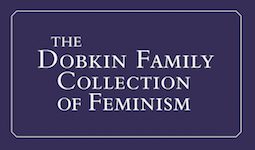We Are Many.
Inscribed by Two Notorious Radicals:
Mother Bloor and Paul Robeson
Bloor, Ella Reeve. We Are Many. Introduction by Elizabeth Gurley Flynn. New York: International Publishers, (1940).
8vo.; photographic frontispiece; other photographs throughout; blue cloth, stamped in white; covers slightly used; photographic dust-jacket, occasionally chipped.
First edition of the autobiography of one of the 20th-century’s most prominent female radicals. A presentation copy, inscribed: To Arnold and Fanny. With love, and comradely greetings. Ella Reeve Bloor. Feb. 15 1941. Additionally inscribed, just beneath, by Paul Robeson: all best wishes and best luck. Paul Robeson. Feb. 15 1941.
Labor activist and high-profile Communist Ella Reeve Cohen Bloor–“Mother Bloor,” as she was known–was born in Staten Island in 1862. Her life began on an extraordinary note: as a child she was a neighbor and friend of Walt Whitman, with whom she often rode the Staten Island Ferry. Bloor’s interest in human rights, and in women’s rights specifically, first developed during her adolescence. As a young woman she established the local chapter of the Woman’s Temperance Union and served as its president; she read Marx and Engels and became interested in the labor movement, and began to agitate for women’s and union rights on a local level. In 1897 she joined the Social Democratic Party of America, and later that year married Louis Cohen, a struggling entrepreneur and socialist associated with Daniel De Leon’s Socialist Labor Party. As she became more enmeshed in socialist politics Ella started climbing the Socialist Party ladder; soon she would be working directly with Eugene V. Debs as a strike organizer for mine workers, machinists, and garment workers.
Bloor acquired her nom-de-plume with the help of Upton Sinclair. In 1906, after the publication of The Jungle, his novel exposing the illegal and immoral practices allowed in the meat-packing industry, Sinclair asked Ella to obtain for him further information about the Chicago meatpacking industry for an investigative report about conditions in the stockyards. Leaving her older daughter to care for her two sons, Bloor traveled to Chicago, accompanied by Richard Bloor, a socialist pottery worker, for protection. Sinclair persuaded Ella to use the alias “Mrs. Richard Bloor” for her reports, believing that the public would be outraged to learn that a woman had traveled with a man to whom she was not married.
In 1910 Bloor helped to establish the National Women’s Committee of the Socialist Party; that same year she introduced a proposal at the party’s national congress that socialist women should work in support of the suffrage movement. From 1912 through the late twenties, Bloor spent a considerable amount of time traveling throughout Europe agitating on behalf of the lower classes. She was also an early, and devout, anti-Fascist organizer, and remained so throughout her life: she was active in the American League Against War and Fascism, headed the American delegation to the 1934 Women’s International Congress Against War and Fascism in Paris, and organized anti-Fascist marches in Europe during the early 1930s. At all times, Bloor balanced her humanitarian efforts with a hefty portion of women’s rights activities.
Bloor and the fugitive musician and political activist Paul Robeson had a rich friendship which spanned many decades. They first met in the fall of 1927, during a protest against Sacco and Vanzetti’s pending execution. When Bloor died in 1951, Robeson was chosen to deliver the eulogy at her well-attended funeral. The collected Bloor-Robeson correspondence is part of the Smith College library’s permanent collection.
(#4620)
Print Inquire


